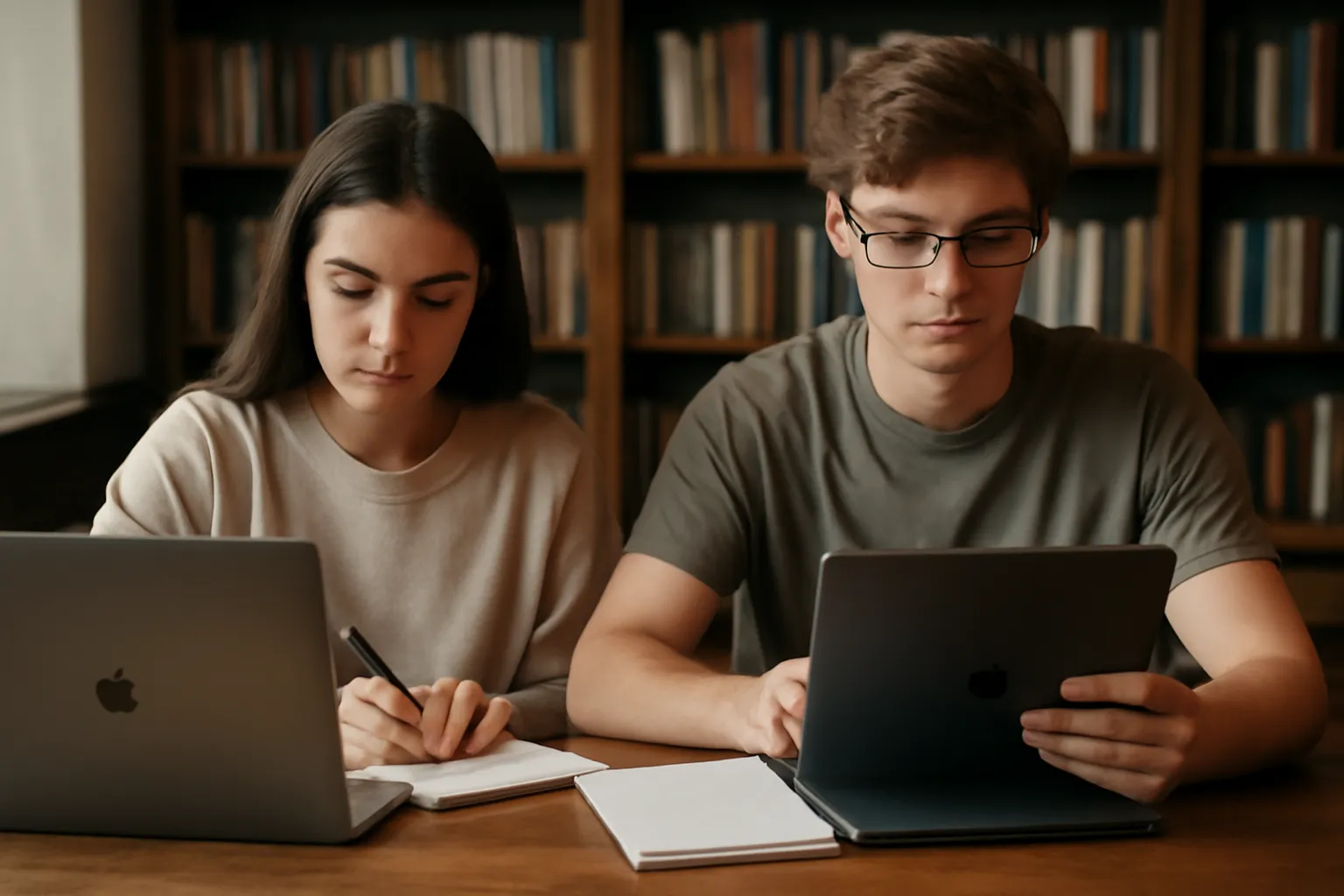Are you a college student wondering which tool to pick for your studies—a traditional pad notebook or a modern laptop/iPad? This article will guide you through the pros and cons of both choices, helping you make the best decision for your academic success.
College Student Pad Notebooks
For many college students, traditional pad notebooks have long been a staple for academic success. Whether you’re jotting down lecture notes, making to-do lists, or sketching out ideas, these notebooks offer a tactile, personal experience that can’t quite be replicated by digital devices.
One of the most significant advantages of using a traditional notebook is enhanced memory retention. Studies show that writing by hand helps engage the brain in a way that typing on a digital device doesn’t. This results in a deeper understanding of the material. Furthermore, notebooks allow you to personalize your study method—drawing diagrams, doodling, and creating mind maps are all possible without worrying about battery life or technical glitches.
The simplicity of a notebook is another appeal. No need for chargers, Wi-Fi, or software updates—just open it, and you’re ready to go. Plus, it can be much easier on your eyes, especially after hours of staring at a screen. A physical notebook offers mental clarity that many students find hard to achieve with devices that can become distractions.
However, traditional notebooks come with their drawbacks. They lack the searchable functionality of digital devices, so finding specific notes can be time-consuming. Also, carrying multiple notebooks can become bulky and inconvenient, especially if you have several subjects or assignments.
Why Choose a Traditional Notebook?
-
Improved memory retention through handwriting.
-
Minimal distractions, unlike digital devices that can tempt you to check social media.
-
Easy to personalize your study habits with sketches, color-coding, etc.
To learn more about using notebooks effectively in college, click the button below.
👉 Learn more about notebook tips 👈
College Student Laptop iPad
On the other side of the spectrum, laptops and iPads have gained significant popularity among students in recent years. These digital devices offer flexibility and a variety of tools to enhance productivity, making them indispensable for modern learning.
The primary benefit of using an iPad or laptop is the ability to organize and access information quickly. With apps like OneNote, Evernote, and Google Docs, students can easily store notes, share documents, and even collaborate with peers. These tools are perfect for creating a cohesive digital filing system, ensuring that you never lose an important note.
Another advantage is the multitasking capability. While working on your research or notes, you can simultaneously browse the internet for references, join virtual study groups, or access your textbook materials—all in one device. The convenience of having all your materials in one place can save time and reduce the need for carrying multiple items around.
However, digital devices can be distracting. With constant notifications, social media apps, and games, it can be hard to focus on your work. Additionally, there’s the issue of battery life—a laptop or iPad may not last a full day of classes without a charge, limiting its usability.
Why Choose a Laptop or iPad?
-
Instant access to information, including online materials and collaboration tools.
-
Multitasking features that allow you to work across multiple applications at once.
-
Cloud storage options to store and sync data across devices, ensuring you never lose a file.
Explore how digital devices can revolutionize your study routine by clicking below!
👉 Discover the advantages of digital study tools 👈
Both College Student Pad Notebooks vs. iPad
So, which should you choose for your academic journey—a traditional pad notebook or an iPad/laptop? Ultimately, the choice depends on your personal preferences, study habits, and the specific requirements of your coursework.
Some students prefer hybrid solutions, such as using both a notebook for handwriting notes and an iPad for organizing and accessing digital resources. This approach combines the best of both worlds, allowing you to use your notebook for creative brainstorming, while leveraging the power of an iPad for research and organization.
One potential compromise is a stylus and digital notebook combo. The Apple Pencil, for example, lets you take handwritten notes on an iPad, giving you the tactile experience of a notebook, with the added benefits of digital organization, searching, and syncing. This hybrid system is an ideal solution for students who love the traditional feel of paper but need the efficiency of digital tools.
But it’s essential to consider your study environment. If you’re in a class that requires a lot of quick note-taking or diagrams, a physical notebook may be more effective. However, for online courses or assignments that require access to documents or group discussions, a laptop or iPad will be your best bet.
Why Combine Both Tools?
-
Use notebooks for creativity and digital devices for organization.
-
Combine handwritten and typed content to enhance retention and workflow.
-
Enjoy the flexibility of a stylus on an iPad for a hybrid solution.
Find out more about how to integrate both tools into your study routine by clicking below!
👉 See the best combinations for effective studying 👈
Conclusion
In the debate between college student pad notebooks and laptops/iPads, the decision is not clear-cut. While notebooks provide a tactile, distraction-free way to study and promote memory retention, digital devices like laptops and iPads offer powerful organizational tools, multitasking features, and access to online resources.
For students who value simplicity and focus, a notebook might be the best option. However, those who need digital integration and cloud-based flexibility may prefer a laptop or iPad. The key is to consider your personal learning style and choose the tool that best suits your needs. After all, the right tool can make all the difference in your academic success.
As Albert Einstein once said, “The only source of knowledge is experience.” So, test both options, and see which one enhances your learning experience the most.






